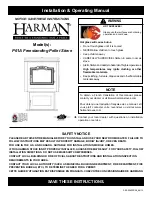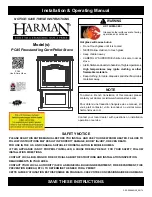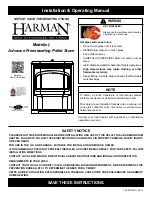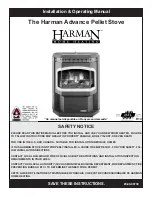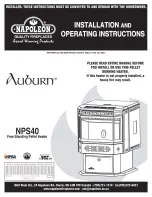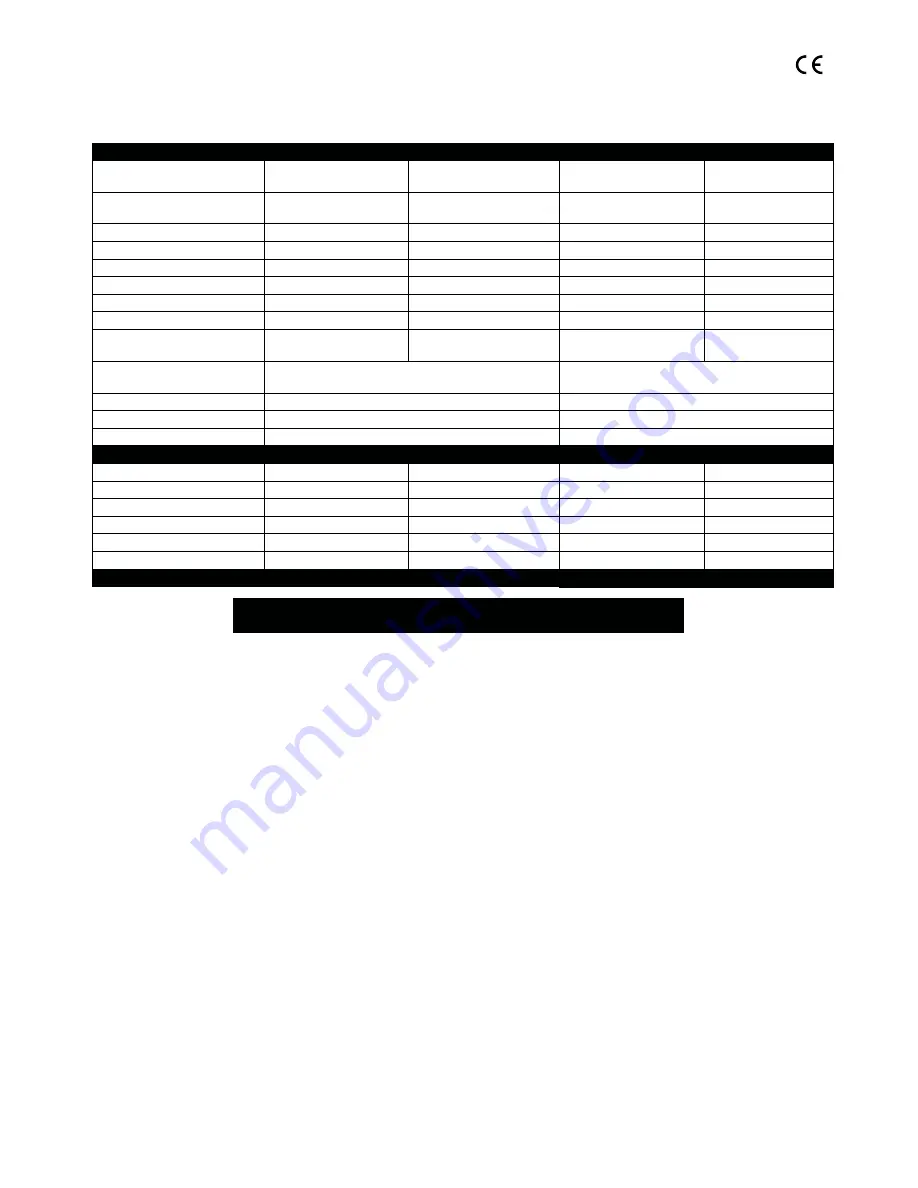
Quick Start Guide
To get the most out of your stove you should take the time to read the instructions provided. If for
any reason you don’t have these instructions contact your retailer and request a copy.
This guide is intended to help you get the best possible fire started. Even if you have previous
experience with stoves, all makes and models vary and the information below will help you gain the
optimum performance from your new stove.
Make sure both the primary (bottom) and secondary
(top) valves are open. The open position is with both
controls fully to the right.
To start a fire, create a small ‘wigwam’ of kindling
towards the back of the grate and light it using a
single firelighter.
Close the door and wait until the firelighter burns
away and the kindling is fully ignited.
Open the door and use a poker to lay the kindling
across the width of the grate.
It is best to keep the fuel towards the back of the
grate during these early stages.
Place a small kiln dried log (less than 15% moisture)
on top of the kindling and close the door.
Wet wood will cause the stove window to blacken.
Do not cover the tertiary air holes (the small holes
located at the rear of the firebox above the back
brick).
Once the log starts to burn close the primary
(bottom) valve by sliding it to the left.
If you’re continuing to burn wood use the secondary
(top) valve to control the fire, we usually recommend
half closing it but every installation will vary so try
different settings until you find one you’re happy
with. If you’re burning solid fuel, such as anthracite,
wait until you have a bed of hot ash and then add
your fuel.
The settings for solid fuel are the opposite to wood,
fully close the secondary (top) valve and control the
rate of burn using the primary (bottom) valve.
Don’t over fill the firebox, this is a very efficient
stove and will generate plenty of heat with a small
amount of fuel.
Primary Valve
Secondary Valve
This document is to be left with the householder after installation.
All our stoves exceed the safety and performance requirements of European Standards.
Independently tested by SGS (Notified Laboratory No: 0608) in 2010.
Intermittent burning solid fuel roomheaters for installation with a single dedicated chimney.
750
450
Fuel
Wood (Beech)
Mineral Fuel (Anthracite)
Wood (Beech)
Mineral Fuel
(Anthracite)
Test Standard
EN 13240:2001 + A2
2004
EN 13240:2001 + A2
2004
EN 13240:2001 + A2
2004
EN 13240:2001 + A2
2004
Test Cycle
1.76kg over 0.82hrs
1.56kg over 1.01hrs
1.36kg over 0.83hrs
0.9kg over 1hr
Settings
Primary 0, 2nd 100%
Primary 75%, 2nd 0%
Primary 0%, 2nd 0%
Primary 50%, 2nd 0%
Flue Draft Pa (ins WG)
12 (0.05)
12 (0.05)
12 (0.05)
12 (0.05)
Efficiency %
78.5
80.1
81.0
81.2
Recommended Rating kW
7.5
7.5
4.5
4.5
Mean Flue Gas Temp Rise °K
253
248
248
294
Minimum air entry
requirement
4000 mm²
4000 mm²
2500 mm²
2500 mm²
Minimum clearance to
combustibles
At back 500mm, at sides 400mm
Back and sides 400mm
Hearth
Not suitable for a light duty hearth
Suitable for a light duty hearth
Weight
105 kg
66 kg
Flue outlet size
150 mm
125 mm
Emissions as if O2 = 13%
Nox mg/mᶟ
115
105
CO %
0.07
0.09
0.2
0.03
CxHy mg/m²
29
231
Gas Flow g/sec
6.1
6
4.1
3.7
Smoke emission mg/mᶟ
51
28
89
32
Smoke emission g/hr
1.1
1.98
This stove must be installed and commissioned by a fully qualified registered engineer, or the building inspector must be informed. For more details contact
your local authority.
This document, when completed by the installer, constitutes part of a ‘Hearth Notice’ for purposes of Building Law. It must be left with the householder and
placed where it can easily be found.
Installed at Location: ......................................................................................... By:........................................................................................................................
I definitively assert that this installation is safe, has been lit and demonstrated to the householder, conforms with current building regulations and with these
instructions.
Signed:............................................................................................................... Date:.......................................................................................................................
Flue Draught measured on commissioning: .....................................................................
Fuel used on commissioning:...........................................................................................
The Clean Air Act 1993 and Smoke Control Areas
Under the Clean Air Act local authorities may declare the whole or part of the district of the authority to be a smoke control area. It is an offence to emit smoke from a chimney of a building, from a furnace or from
any fixed boiler if located in a designated smoke control area. It is also an offence to acquire an "unauthorised fuel" for use within a smoke control area unless it is used in an "exempt" appliance ("exempted" from
the controls which generally apply in the smoke control area).
The Secretary of State for Environment, Food and Rural Affairs has powers under the Act to authorise smokeless fuels or exempt appliances for use in smoke control areas in England. In Scotland and Wales this
power rests with Ministers in the devolved administrations for those countries. Separate legislation, the Clean Air (Northern Ireland) Order 1981, applies in Northern Ireland. Therefore it is a requirement that fuels
burnt or obtained for use in smoke control areas have been "authorised" in Regulations and that appliances used to burn solid fuel in those areas (other than "authorised" fuels) have been exempted by an Order
made and signed by the Secretary of State or Minister in the devolved administrations.
Further information on the requirements of the Clean Air Act can be found here: http://smokecontrol.defra.gov.uk/
Your local authority is responsible for implementing the Clean Air Act 1993 including designation and supervision of smoke control areas and you can contact them for details of Clean Air Act requirements
These stoves may be used in smoke control areas strictly in accordance with these instructions, when burning:
UK: Untreated wood logs, natural anthracite or authorised smokeless fuels (authorised under s20(6) of the clean air act 1993)
RoI: Wood logs, smokeless fuels or peat briquettes, but not petroleum coke (Control of Atmospheric Pollution Regulations 1970)
Read these instructions! Use only recommended fuels!











